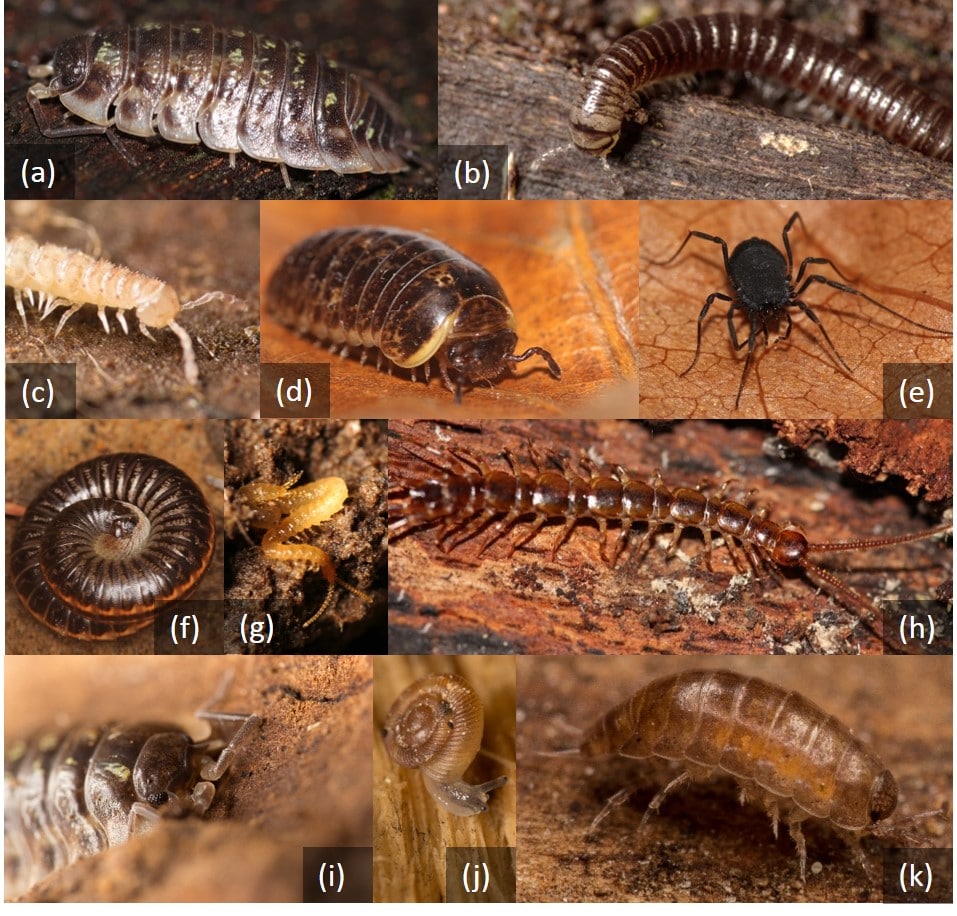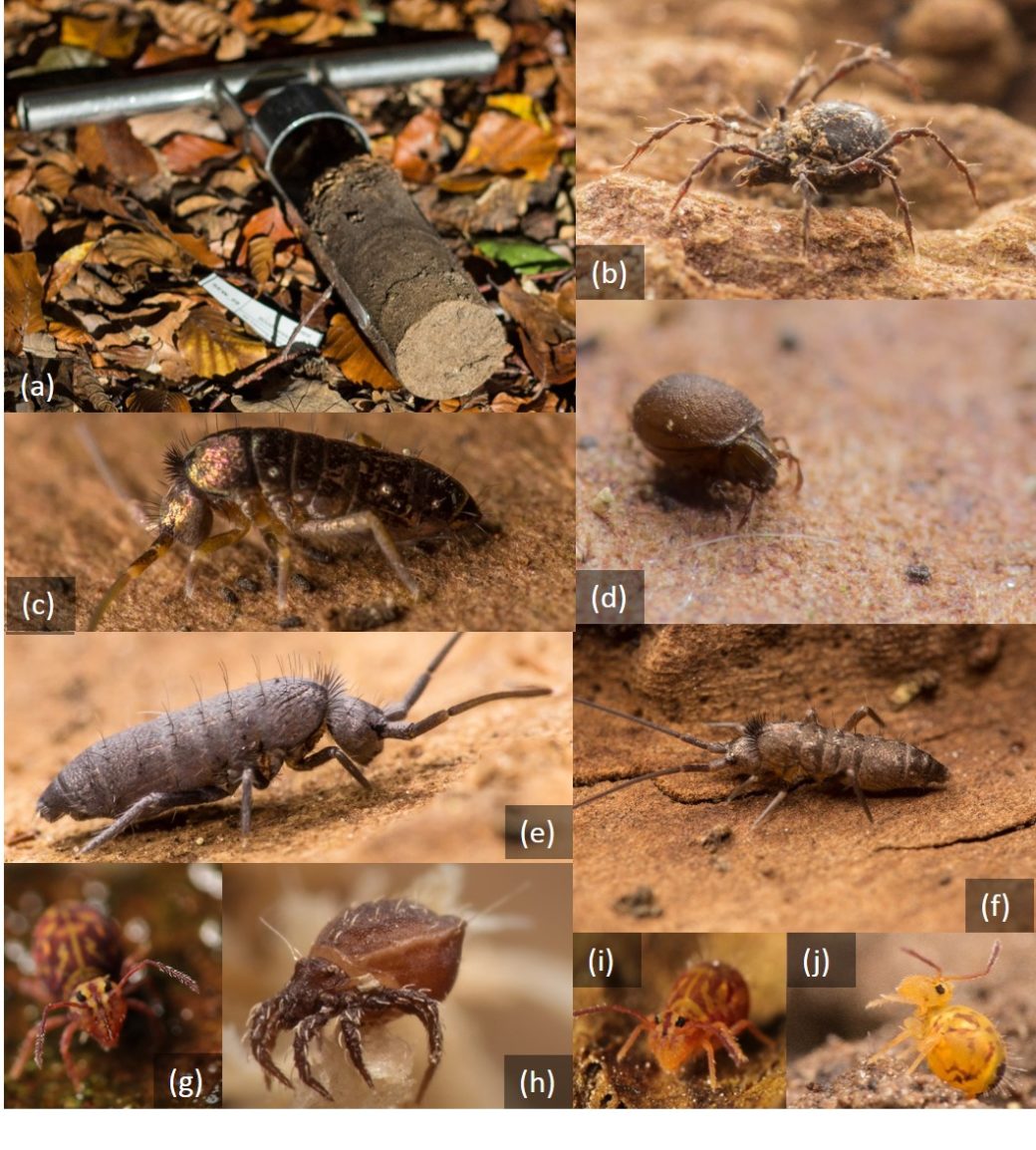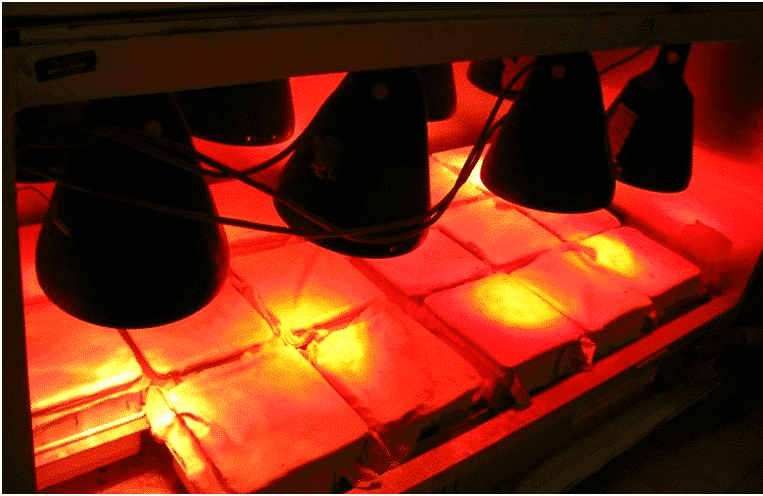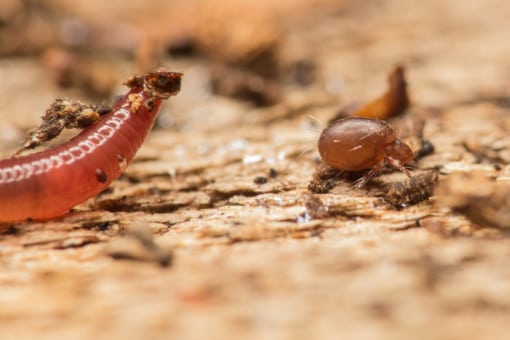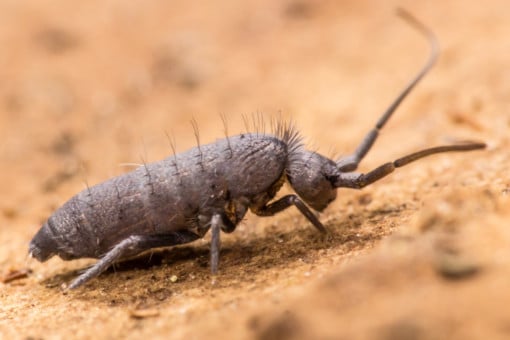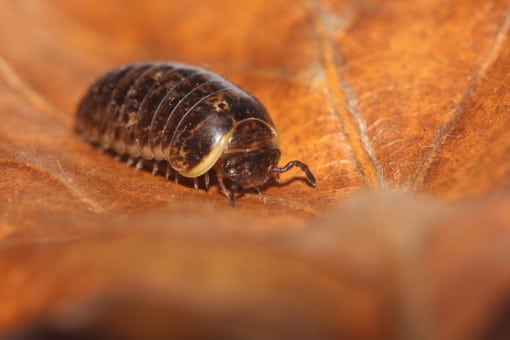Changes in community assembly processes after strong disturbance
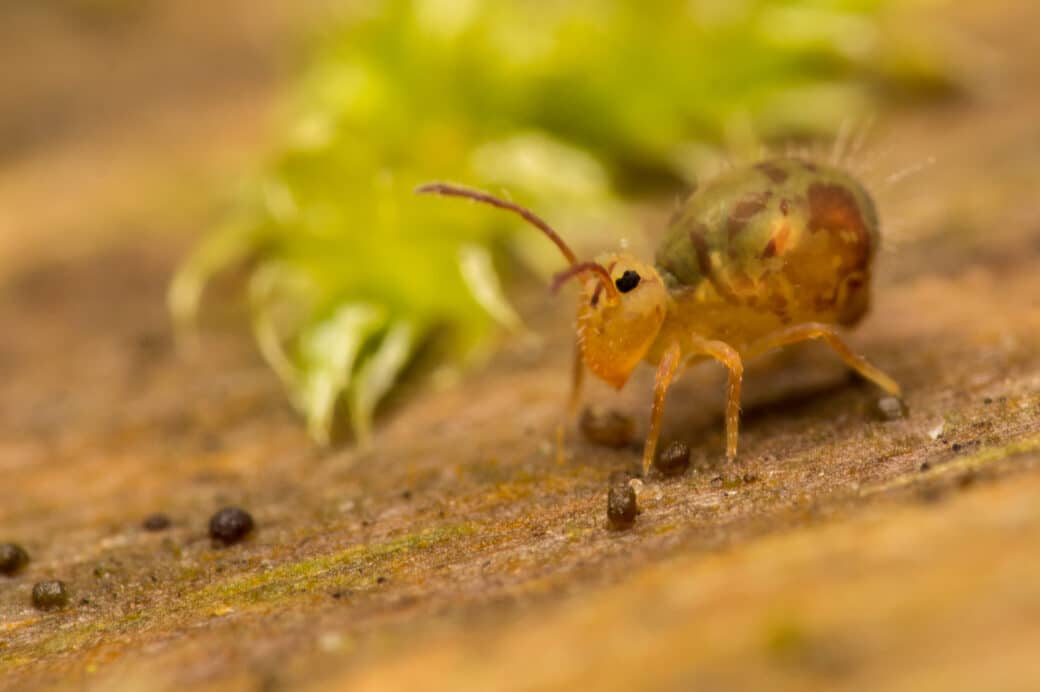
Soil food webs are an essential part of terrestrial ecosystems and closely linked to aboveground systems. In soil, animals act as decomposer of dead organic matter, as root feeders or as ecosystem engineers, which improve soil structure by mixing soil layers. Despite their important role, we know little about these creatures and their interactions due to their small size, high diversity, but also their cryptic life.
We examine the effect of forest land use on the structure of and trophic interactions in soil animal communities. The goals of this project are two-fold: First, we characterise the animal communities of the soil and litter layer in differently managed forests and record shifts in abundance, diversity and biomass over time. We then use these data to study trophic relationships of key species, their trophic position and food resources.
- Generally, dominance and trophic structure in the soil animal communities vary little in time, and variations with forest type / land-use intensity are consistent in time.
- Temporal variations are more pronounced in larger soil animal taxa and increase with trophic level.
Methods
Soil Macrofauna (Fig.1) and Mesofauna (Fig.2) will be extracted from litter and soil separately using the high gradient canister technique (Fig. 3A). Earthworms will be extracted by the mustard method. Soil animals will be identified to species level and abundance, diversity and biomass will be recorded.
Information on microorganisms is essential for the analysis of trophic links in soil animal food webs.
Therefore, microbial biomass will be measured by substrate-induced respiration (SIR) and microbial phospholipid fatty acid (PLFA) patterns using biomarker fatty acids.
- The response of soil animal communities to forest gap formation varies between functional groups of soil invertebrates and is most pronounced in detritivores (rather than predators).
- The response of soil animal communities to forest gap formation varies with forest type / land-use intensity and is most pronounced in forest ecosystems of low management intensity, i.e. increases from natural to mature to young beech to coniferous forests.
Methods
Following the design of the common ‘forest gap experiment’ (FOX) four types of experimental plots will be established within different forest types: undisturbed dense forest, dense forest with deadwood on the forest floor, forest gap with deadwood on the forest floor, and forest gap without deadwood. In each of the experimental plots the soil fauna (Figs 1 & 2) will be extracted from litter and soil using a high gradient canister technique (Fig. 3) and diversity, abundance and biomass will be measured. Earthworms will be extracted by the mustard method and microbial biomass will be measured by the substrate-induced respiration (SIR).
- Energy fluxes vary little between differently managed beech forests, but differ between deciduous (beech) and coniferous forests; this pattern is consistent in time.
- Energy is channeled in similar ways through meso- and macrofauna, reflecting food web compartmentalisation; patterns are similar in beech forests of different age, but differ between beech and coniferous forests.
Methods
As δ13C signatures in amino acids differ between bacteria, fungi and plants due to different biosynthetic pathways, a fingerprinting approach using δ13C values of essential amino acids can differentiate basal resources in consumers. The relative consumption of these resources can be quantified using mixing models. The trophic position of consumers can be calculated using δ15N values of so-called ‘trophic’ and ‘source’ amino acids; the former are strongly enriched with each trophic transfer, whereas the latter are not or only slightly enriched, reflecting the isotopic signature of the basal resource. The trophic position can be calculated from the isotopic difference between these amino acids more accurately than by using bulk isotopic signatures.
Compound-specific analysis of δ13C in marker fatty acids for bacteria, fungi and plants can also provide information on energy fluxes from different basal resources to consumers, thereby complementing compound-specific analysis of amino acids.
Hypotheses:
- Community assembly in both Collembola and Oribatida is based predominantly on environmental filtering but this is more pronounced in forest gaps than consolidated forests.
- Trait-based approaches of Collembola and Oribatida community assembly are more powerful in forests than in (disturbed) gaps, but increase in gaps with time.
Objective:
- To understand how soil animal communities assemble, phylogenies for important species of mesofauna decomposers, the Collembola and Oribatida, will be established. To deepen our understanding of the mechanisms responsible for community assembly, the phylogenetic approach will be combined with trait-based approaches. Traits that will be both drawn from the literature and measured as part of the project include general morphological traits such as body size and sclerotization, physiological traits such as desiccation resistance and mobility, and trophic traits such as trophic position and trophic plasticity (as measured in earlier phases of LitterLinks using stable isotopes). Traits will also be analyzed for phylogenetic signals to determine if trait values can be predicted by relatedness.
Methods:
- Phylogenetic relationships are reconstructed using Bayesian inference as well as the maximum likelihood method. Phylogenetic relatedness of coexisting species in local communities will be analyzed based on the mean pairwise phylogenetic distance (MPD) and mean nearest taxon distance (MNTD) of local communities; this will form the basis for deriving the Net Relatedness Index (NRI) and Nearest Taxon Index (NTI).
Our project LitterLinks examines the community composition and trophic structure of soil animals, and their microbial resources as related to variations in environmental factors, including forest types and land-use intensity.
- We showed that species composition, abundance and biomass of soil animal communities are strongly influenced by abiotic factors such as soil pH or climatic conditions (Bluhm et al., 2016; Pollierer & Scheu, 2017), pointing to the importance of regional environmental conditions, while soil animal communities are surprisingly resistant against changes in forest land-use intensity (Pollierer et al., 2021).
- Using a comprehensive toolbox of methods, such as bulk stable isotope analyses (Erdmann et al., 2012; Klarner et al., 2017), fatty acid analyses (Ferlian & Scheu, 2014; Ferlian et al., 2015), molecular gut content analyses (Günther et al., 2014) and compound-specific isotope analyses of amino acids (Pollierer & Scheu, 2021), we showed changes in energy fluxes from basal resources to animal consumers in different forest types at the level of species.
- Energy fluxes through microbial channels were more pronounced in coniferous compared to beech forests, with most mesofauna species feeding on saprotrophic and not ectomycorrhizal fungi (but see Bluhm et al., 2019). However, despite variations in leaf litter and microbial community composition (Pollierer et al., 2015), trophic niches of soil animal species were consistent across different forest types, presumably due to feeding at specific microsites (Ferlian et al., 2012; Pollierer & Scheu, 2021).
- Deprivation of root-derived resources in a trenching experiment heavily decreased microbial biomass as well as abundance and biomass of soil animals, in particular mesofauna, indicating their major role in fuelling soil webs (Bluhm et al., 2019; 2021). However, only minor changes in community composition of soil microbes and animals suggest non-specific links to root-derived resources.
- Already one year after forest gap formation we could detect changes in the abundance of meso- and macrofauna. While the abundance of macrofauna decomposers such as isopods, diplopods and earthworms was reduced in forest gaps, the effects of forest gap formation on oribatid mites as important mesofauna decomposers were influenced by regional dynamics. In Hainich, there were only minor effects, whereas in the Swabian Alb, abundances were reduced in forest gaps; however, this could be mitigated by addition of deadwood (Junggebauer et al. in prep). This indicates that taxonomic and regional differences must be taken into account when considering the effects of forest gap formation.
- Our long-term studies of soil animal abundance, biomass, and community composition suggest that, unlike in aboveground arthropod communities, there is not a general declining trend in soil animal abundance and biodiversity. Instead, soil animals are more likely to be affected by fluctuations in environmental conditions such as temperature and precipitation (Pollierer et al., Junggebauer et al., Jueds et al. & Klarner et al. in prep).
